LEARN ABOUT ICH
WHAT IS INTANGIBLE CULTURAL HERITAGE (ICH) ?
ICH is living cultural heritage. Although it transforms over time, it is transmitted from generation to generation and gives us cultural identity and richness thus enhancing social cohesion.
In the text of the United Nations Educational, Scientific and Cultural Organization (UNESCO) 2003 Convention (Article 2(2)), the following five types of ICH are included:
- ORAL TRADITIONS AND EXPRESSIONS
-

Hudhud chants of the Ifugao (Philippines)
© 2008, by J. Uñalivia/NCCA-ICH, with the permission of UNESCO

Tradition of Vedic chanting (India)
© Sangeet Natak Akademi, New Delhi, India, with the permission of UNESCO
- PERFORMING ARTS
-
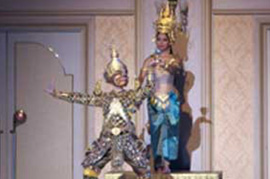
Royal ballet of Cambodia (Cambodia)
© International Research Centre for Intangible Cultural Heritage in the Asia-Pacific Region (IRCI), 2013

Ca trù singing (Viet Nam)
© 2006, Vietnamese Institute for Musicology. Ministry of Culture, Sports and Tourism of Vietnam, with the permission of UNESCO
- SOCIAL PRACTICES, RITUALS AND FESTIVE EVENTS
-
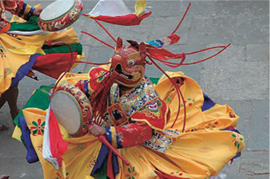
Mask dance of the drums from Drametse (Bhutan)
© 2007, by Institute of Language and Cultural Studies – Semtokha Bhutan, with the permission of UNESCO
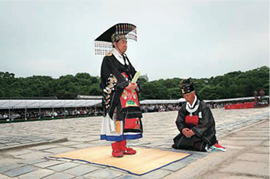
Royal ancestral ritual in the Jongmyo shrine and its music (Republic of Korea)
© National Research Institute of Heritage, 2008, with the permission of UNESCO
- KNOWLEDGE AND PRACTICES CONCERNING NATURE AND THE UNIVERSE
-
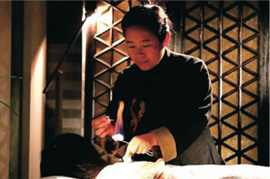
Acupuncture and moxibustion of traditional Chinese medicine (China)
© Institute of Acupuncture and Moxibustion, 2009, with the permission of UNESCO
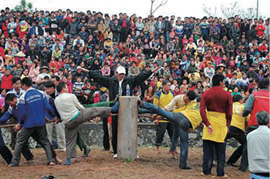
Tugging rituals and games (Cambodia, Philippines, Republic of Korea, Viet Nam)
© Vietnam Institute of Culture and Art Studies, 2013, with the permission of UNESCO
- TRADITIONAL CRAFTSMANSHIP
-
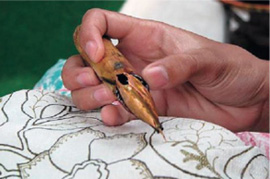
Indonesian Batik (Indonesia)
© Batik Museum Institute, Pekalongan, 2008, with the permission of UNESCO
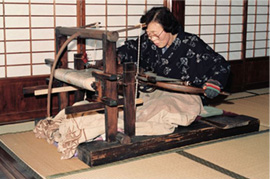
Ojiya-chijimi, Echigo-jofu (Japan)
© 1998, by Association for the Conservation of Techniques for Echigo-jofu, Ojiya-Chijimi, with the permission of UNESCO
ABOUT UNESCO
The United Nations Educational, Scientific and Cultural Organization (UNESCO) was founded in 1945 for the purpose of promoting international collaboration in the fields of education, science, culture, and communication.
UNESCO’S CONVENTION FOR THE SAFEGUARDING OF THE INTANGIBLE CULTURAL HERITAGE
Among a total of seven conventions of UNESCO regarding culture, is the Convention for the Safeguarding of the Intangible Cultural Heritage (the 2003 Convention), which was adopted in 2003, and which aims to preserve and protect intangible cultural heritage.
The 2003 Convention was the outcome of discussions held at UNESCO since the 1950s for the purpose of safeguarding folklore, including oral traditions and folk arts. The Convention has four objectives: (1) to safeguard intangible cultural heritage; (2) to ensure respect for the intangible cultural heritage of the communities, groups and individuals concerned; (3) to raise awareness at the local, national and international levels of the importance of intangible cultural heritage; and (4) to provide for international cooperation and assistance.
The 2003 Convention takes the standpoint of valuing all intangible cultural heritage equally. It focuses on the practitioners’ daily lives in relation to ICH, and thus encourages the participation of communities to which the practitioners belong. This underlying notion reflects the idea that the people are the ones that play a crucial role in ICH overall – in creating, recreating, maintaining and transmitting the treasures of humanity.
Many member states that have ratified the 2003 Convention currently suffer from poverty, low rates of literacy, a lack of experts, a lack of interest among young people, urbanisation, conflict, and war. For this reason, assistance in developing legal systems, in the training of human resources, financial assistance, sustainable education, and similar areas are perceived necessary.
LEARNING MATERIALS
VIDEO FEATURES
-
Osaka, 29 November 2017
Co-organised by IRCI, the National Ethnology of Museum (Japan), and the Agency for Cultural Affairs (Japan)
-
Osaka, 19 November 2016
Co-organised by IRCI, Sakai City, and the Agency for Cultural Affairs (Japan) In cooperation with the Ministry of Foreign Affairs (Japan), the Japanese National Commission for UNESCO, and the Japan Art Council (National Bunraku Theatre)
-
The Training Course for the Safeguarding of ICH 2011
Tokyo, Osaka, and Shiga, Japan, 1-5 February 2011
Co-organised by the National Research Institute for Cultural Properties, Tokyo In cooperation with the National Museum of Ethnology Supported by the Japanese National Commission for UNESCO



